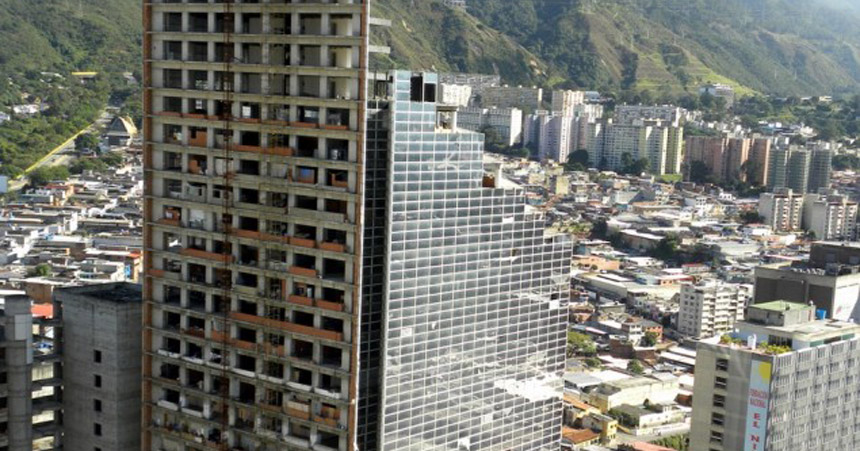Torre De David
The structure and the thoughts of the habitants keeps in dialogue with the architecture of the tower, which once had been conceived as a financial center and now gives shelter to a parallel society.
“The night we came in, I was scared, but I was also excited to finally have my own home,” says Jhonny Jimenez, 31, a member of the founding group and now one of the tower’s main co-ordinators. “We organised people according to their needs: the elderly who can’t go up flights of stairs would go in the lower floors and large families would get more space.”
The Torre de David began as another hugely-ambitious development in the 1990’s – this one in Caracas, the capital of Venezuela. But when investor money dried up, construction stopped and the tower was abandoned. At some point, so the story goes, Hugo Chavez offered the tower up to the locals and the world’s tallest squatter slum dwelling began to emerge.
For this project I did not experience the tower first-hand but was commissioned by a video artist named cylixe working out of Berlin at the time. She travelled to Caracas and documented the tower with video, sound recordings, and interviews, and then composited the results in her film Una Ciudad En Una Ciudad. I produced the score without seeing the film but based on the audio tracks she provided (many of which create the background elements of the two songs) and my remote perceptions of the tower, both architecturally and as a consideration of re-appropriation amidst the cycles of post-modern economics.
“A heterotopy is a space, symptomatically reflecting upon a social netting. An empiric, fractal view in to the everyday life, the structure and the thoughts of the habitants keeps in dialogue with the architecture of the tower, which once had been conceived as a financial center and now gives shelter to a parallel society.”
– cylixe

